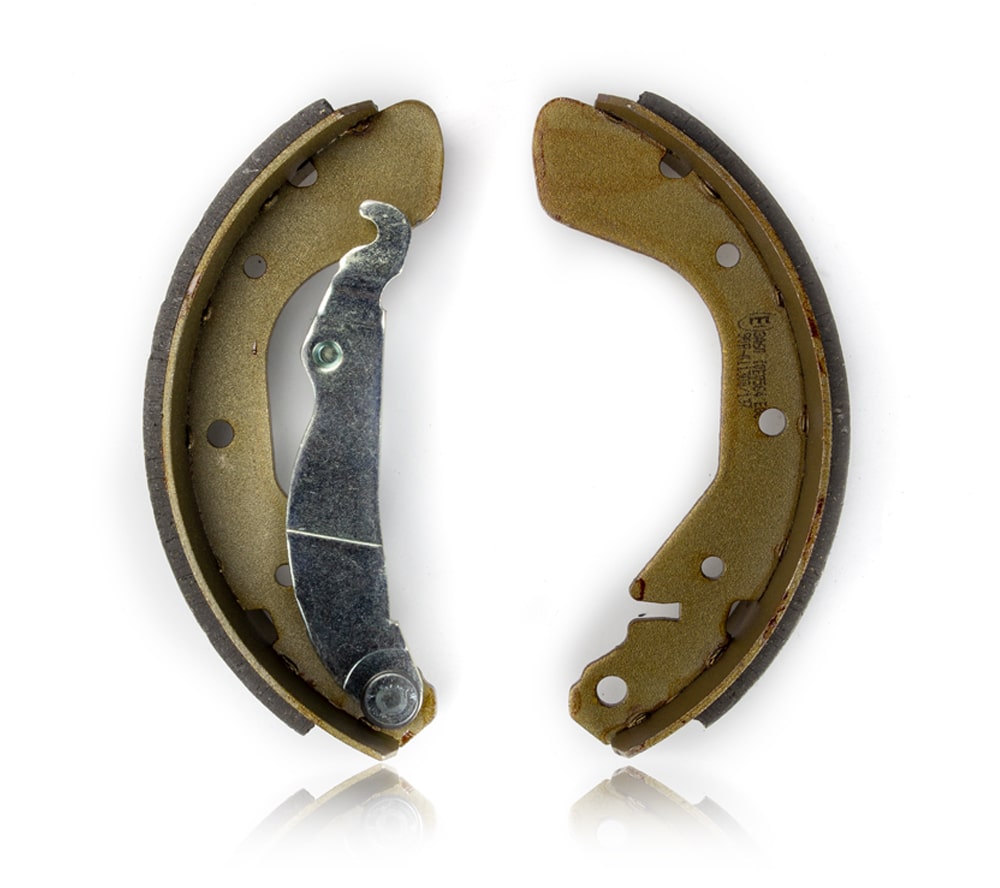A brake shoe is a component used in drum brake systems to generate friction and facilitate braking in vehicles, such as cars, motorcycles, and some heavy-duty vehicles. Here are some key points about brake shoes:
- Function: Brake shoes are responsible for pressing against the interior surface of a rotating brake drum to create friction, which helps to slow down or stop the vehicle. The frictional force generated between the brake shoe and the drum converts kinetic energy into heat energy, resulting in the deceleration of the vehicle.
- Composition: Brake shoes are typically composed of a metal shoe plate or platform and a friction material lining. The shoe plate is usually made of steel or another durable metal, while the friction material lining is made from various formulations, such as organic, semi-metallic, or ceramic materials.
- Drum Brake System: Brake shoes are an integral part of drum brake systems. In this system, the brake shoes are located inside the brake drum, which rotates with the wheel. When the brake pedal is pressed, hydraulic or mechanical force is applied, causing the brake shoes to expand against the drum, generating friction and slowing down the vehicle.
- Types of Brake Shoes:
- Organic Brake Shoes: Organic brake shoes are made from a mixture of organic materials, such as rubber, resins, and fibers. They offer smooth braking performance, a good pedal feel, and low noise levels. However, they may wear faster and have reduced heat resistance compared to other types.
- Semi-Metallic Brake Shoes: Semi-metallic brake shoes contain a blend of metallic fibers, such as steel or copper, along with other materials. They provide improved heat dissipation, durability, and braking performance. However, they may generate more noise and have a slightly harsher feel during braking.
- Ceramic Brake Shoes: Ceramic brake shoes utilize ceramic fibers, bonding agents, and other fillers. They offer excellent braking performance, low noise levels, minimal dust generation, and reduced wear on both the brake shoes and drum. Ceramic brake shoes are often considered a high-performance option, but they may be more expensive than other types.
- Wear and Replacement: Brake shoes gradually wear down over time due to the frictional forces involved in braking. The rate of wear depends on factors such as driving style, vehicle weight, and the type of brake shoe material. It is important to regularly inspect the brake shoes and replace them when they reach their minimum allowable thickness to maintain optimal braking performance and safety.
- Maintenance and Inspection: Regular maintenance includes inspecting the brake shoes for signs of wear, cracking, or any damage. It is essential to keep the brake shoes clean and free from contaminants that can affect braking performance.
Brake shoes play a critical role in the drum brake system, providing friction and contributing to effective braking. It is important to follow manufacturer recommendations regarding brake shoe selection, maintenance, and replacement intervals for optimal braking performance and safety.
IMAGE GALLERY

CONTACT US
For details, do any of the following:
- Call or text me at 09460480491
- Message us on Facebook at https://www.facebook.com/rbsublimationsignage/



